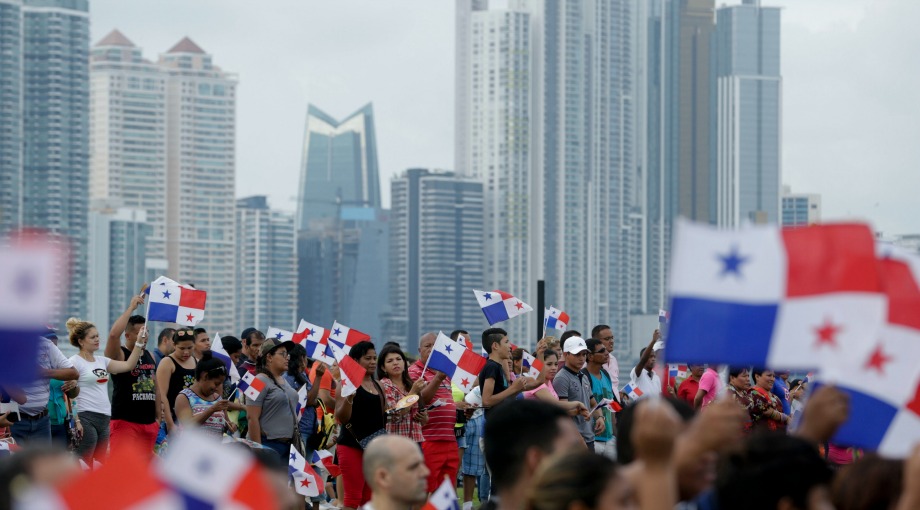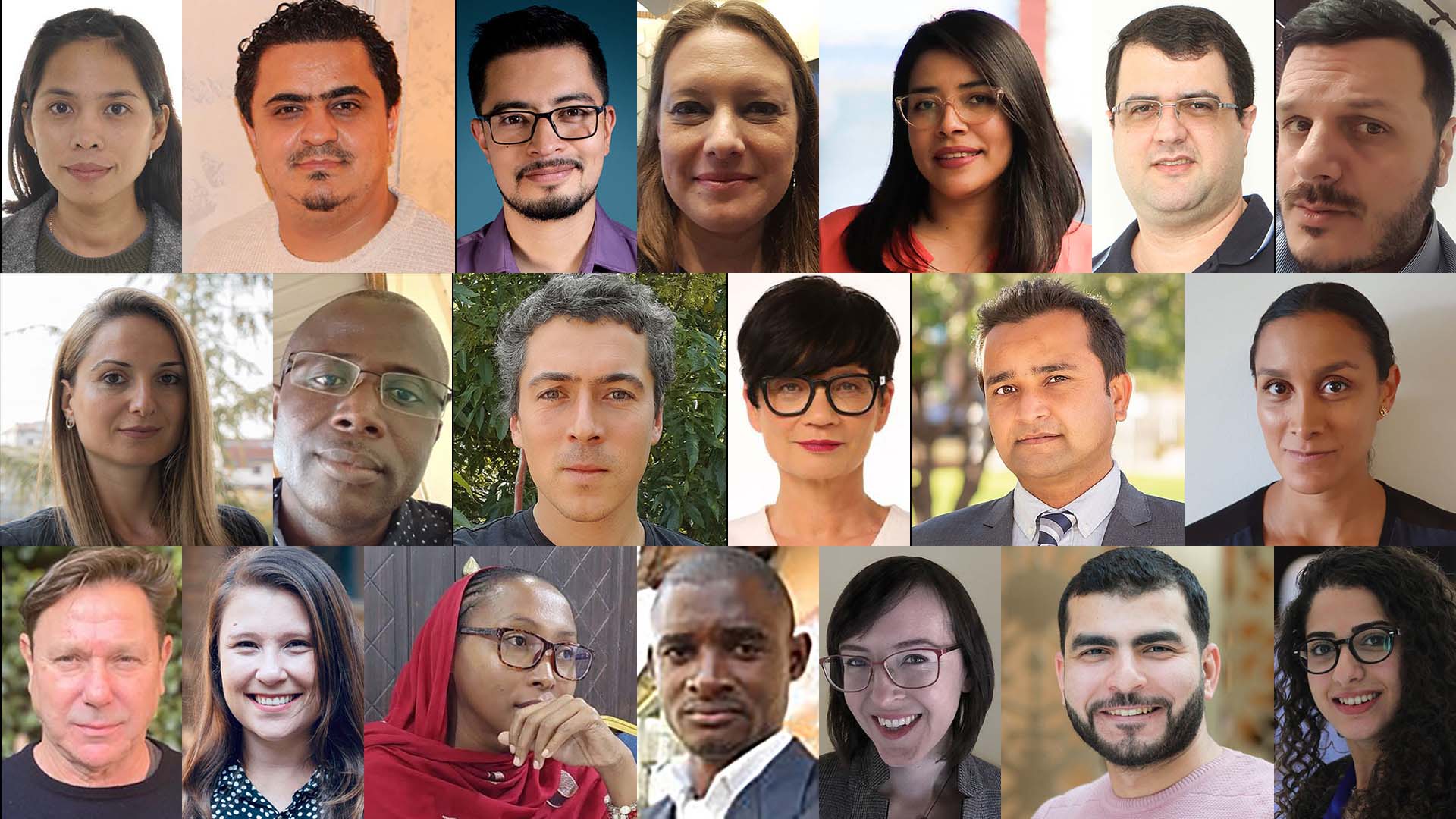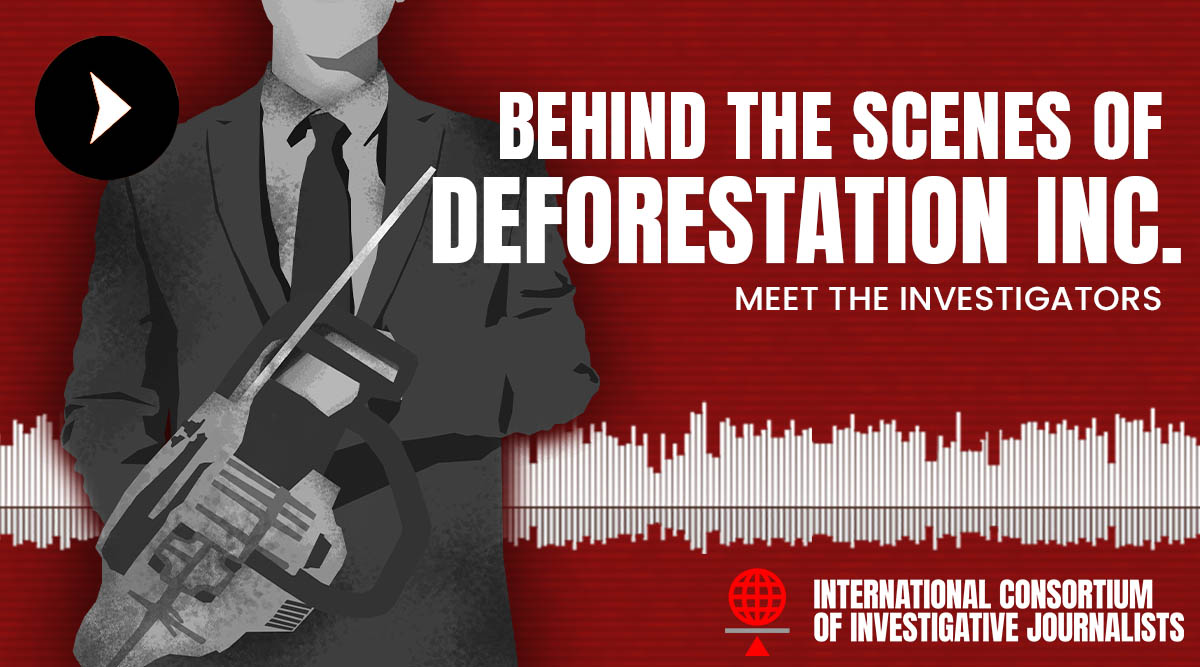MEET THE INVESTIGATORS
Reporting from a storm and defying the odds to hold a government accountable
How does a reporter do their job from a disaster zone, with utter destruction all around? Omaya Sosa Pascual takes us behind the scenes of her Hurricane Maria reporting, and shares how their fight for transparency continues in Puerto Rico.
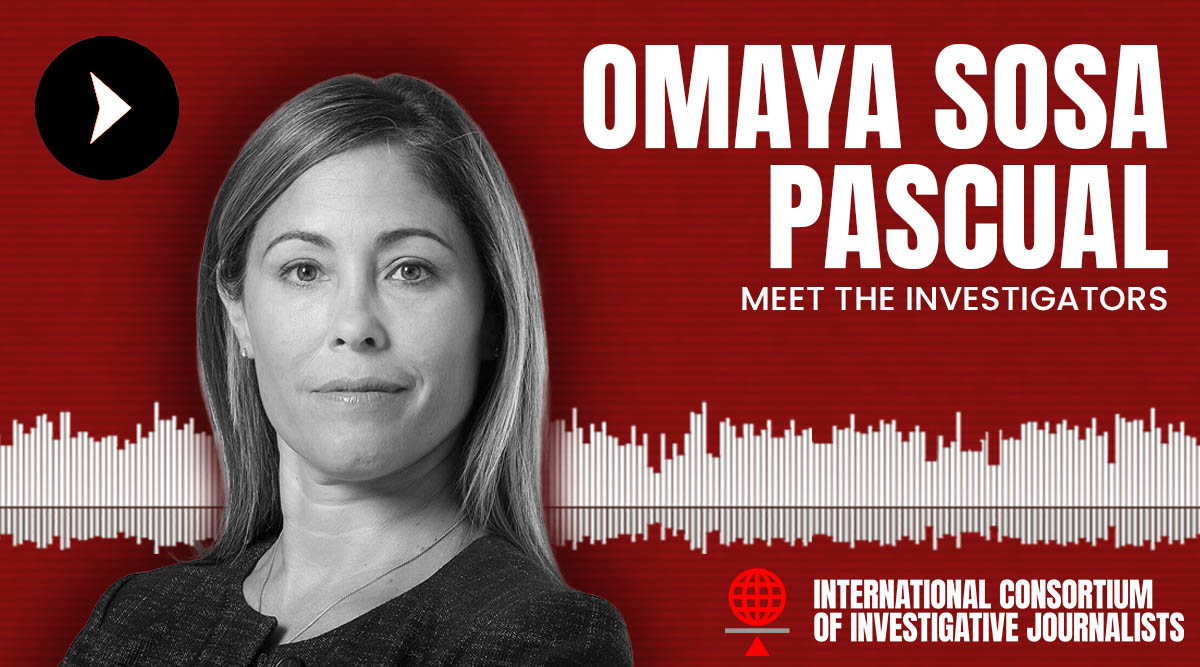
The International Consortium of Investigative Journalists collaborates with hundreds of members across the world. Each of these journalists is among the best in his or her country and many have won national and global awards. Our monthly series, Meet the Investigators, highlights the work of these tireless journalists.
How does a reporter do their job from a disaster zone, when there’s no power, no transport, no cell service, and utter destruction all around? For this month’s Meet the Investigators, ICIJ member Omaya Sosa Pascual shares what it was like to cover the aftermath of Hurricane Maria on her home island of Puerto Rico — and how, against the odds, her team was able to hold their government accountable by accurately sharing the true scale of death and devastation wrought by the storm.
Omaya’s determination shines at every point in her career. From defying the odds to set up her own nonprofit newsroom, to constantly battling for access to reliable information from the government, Omaya is now also pioneering better journalism networks across the Caribbean and has recently founded a mental health-focused digital magazine called Es Mental.
This episode was originally published in April and sent to ICIJ’s community of monthly recurring donors, the ICIJ Insiders.
TRANSCRIPT:
Brenda Medina: Hello and welcome back to Meet the Investigators from the International Consortium of Investigative Journalists. I’m your new host, Brenda Medina, and I’m a reporter here at ICIJ.
If you’re joining us for the first time, Meet the Investigators is a podcast where we sit down and hear from one ICIJ member from across the globe.
Today, we’re joined by Omaya Sosa Pascual. She’s a Puerto Rican media entrepreneur. 15 years ago, she co-founded the nonprofit Puerto Rican Center for Investigative Reporting.
The center has since become a respected journalism institution in the Caribbean, especially for their investigative work that came out of Hurricane Maria in 2017.
[Audio clip, ABC News: Tonight, Maria’s direct hit, devastating Puerto Rico…]
Brenda: I’ve been following the work of CPI, the Centro de Periodismo Investigativo, for years. And I was at the Miami Herald covering the hurricane season in 2017.
Even in Florida, reporting on hurricane Maria was intense. And there was the CPI, putting out incredible stories under what, I can only imagine, was even more pressure…
Omaya Sosa Pascual: In that moment, we had never had a hurricane like this before, it just swept the whole island, nothing was left. We had never had that, we’re used to strong hurricanes, but, you know, it was, before it was maybe half of the island, the north or the south, there was always somewhere to go to. But that happened, and we were in a complete blackout.
We had no plan. We never thought that this would happen. So, we didn’t know if the others were alive or dead. We knew nothing.
So, we didn’t know about our family members, we didn’t know about our co-workers. We had no electricity, the supermarkets were closed. There was no cell phone signal, there was no Internet. It was impossible to drive around the city, because all of the debris and all the trees were just blocking the streets. You didn’t know what to do.
We had no plan. We never thought that this would happen. So, we didn’t know if the others were alive or dead. We knew nothing.
And I remember in my case, I was just here, everybody in my street was just outside with beach chairs, trying to avoid heat. And basically thinking, what are we going to do? And just… So I just said, I’m sorry, but I can’t keep on doing this. I’m gonna put on my backpack with my computer and I’m gonna walk somewhere to see what’s going on and to see if I can get signal.
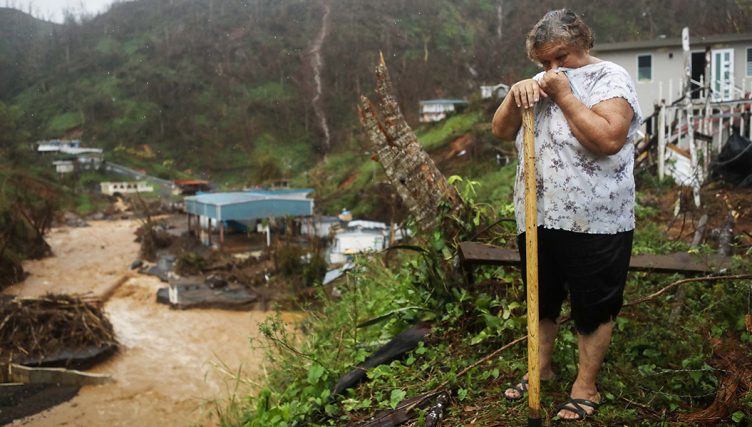
Brenda: Omaya didn’t have a plan. But she knew that as journalists, she and her colleagues needed to go to where the stories are.
Omaya: I was able to find a hotspot, I don’t know how many blocks away from my house. Maybe it was like 10 blocks, because that was an internet provider, a fiber optic company, and I saw a couple of people around the building just trying to connect. They were kind enough to just open their service to whoever — that’s when I started receiving some WhatsApp messages saying, we have to meet.
Brenda: First, they needed a place where they could get together. Omaya asked the owners of that fiber optic company if they could use their building as an impromptu newsroom.
Omaya: And people started showing up. So we just met there standing. There was no chairs, no tables are nothing. And that, halfway through our meeting, we found out, all the reporters had a story in mind already from what was happening in their communities.
And I had my story in mind, because, in my area, there are some doctors living. And I was comparing the information they were coming back with when they started to go to the hospitals, to see what was going on, with the data that the Governor was giving. He would say there are six deaths, for example. And I will get from doctor’s I know telling me, you know what, in my hospital, it was 10 only in one day and we have 80 hospitals in Puerto Rico, so I said there’s something really off here. This, it’s not what he’s saying, and I propose that story.
Brenda: They went back to pen and paper… manually putting together a database of hurricane-related deaths. They collected information from police stations, hospitals, doctors, and mayors.
The center documented hundreds of deaths– many more than the official count of 64 people.
In the end, the investigation made waves. Their reporting pushed the government to commission a third party count – which, a year later, estimated deaths to be in the thousands.
But the reporting process was tough.

Omaya: You would leave for towns in the morning, and you could not speak to anybody until they came back in the afternoon, you couldn’t come back at night because there were no lights on the streets. It was really dangerous.
So personally, it was very tough. It almost cost me a divorce.
I always tell this story because one day I arrived almost at night to get an interview with the major of the Army who was in charge. The general who was in charge of the rescue operation. And they just made me wait until night, and I couldn’t leave.
Brenda: The stress and worry came to a head that night— even for a husband that has always supported her and her work.
Omaya: So he said that I’ve had it And you know, your family comes first. The kid is crying. I’m trying to start up the electrical generator, and I’m full of diesel and the mosquitoes And there’s no food and everything. And you’re working.
Brenda: Omaya hadn’t always set out to be a journalist. She wanted to be a film director.
Omaya: I studied in Tulane University in New Orleans, communications. And I, I just, I love my island. I didn’t want to stay in the states. I wanted to come back, and I figured I couldn’t make a living from that here. I said, I’m just going to tell stories another way. It’s the same thing. You tell stories through film, or you tell written stories.
So I started writing film criticism. That was my first journalism job, for a newspaper here, and that, you know, things are crazy. They ended up giving me a permanent job as a business reporter, and I had no business experience, and an editor convinced me and said, take the job, I’m like, I’m not going to do this, she’s, like, take it, you can do that. You can do it, and I said, OK, I’ll give it a try. And three or four months after, they recruited me as part of the first investigative unit at the newspaper. So, it seems like I had something.
And I changed from, let’s say, thinking about films and maybe you know entertainment, to just deciding that this was a passion for me. I wanted to do investigations and I never looked back. I’ve been doing investigations for more than 27 years now.
Brenda: But the Center for Investigative Journalism was a whole new undertaking.
Omaya: Many people don’t know the full story of the CPI, But when we started, it was two, regular journalists that had no financial or no business knowledge or experience, just with a dream and that recognized there was a great need for investigative journalism in our country and our island.
Brenda: They knew they would have to fight for access to public records constantly, so they made litigation part of the center’s core mission from the beginning
Omaya: We decided to found it at the university, Inter-American University in Puerto Rico because they have a very strong legal program. And we decided to do a hybrid organization doing journalistic investigations, and publishing them, but also conducting litigation, access to information litigation because we knew for sure that we would not be getting the documents we needed from the government and in Puerto Rico we don’t have FOIA, We have to go to court to ask for the documents.
We, me and my colleague, Oscar Serrano, knew that we were going to have to litigate because we had to do it in our respective newspapers a couple of times. And with the pass[ing] of time, we also noticed that there was less willingness from the paper to invest money in lawsuits. They were having financial trouble, like many, many legacy outlets.
So it got to the point where no mass media in Puerto Rico were filing lawsuits for access to information. And that was a big, a big hurdle for journalistic investigations, and for our work, basically. Many important stories were not coming out because we were not able to get information from the government and the outlets were not filing suits.
Brenda: With big goals and little resources, they launched online in 2008
Omaya: We just started this adventure with a yearly, an annual $30,000 budget from a university that was kind enough to support us. And that was for everything, salaries and everything. Needless to say, we had to work two or three jobs at the same time. It was really crazy. I mean, nobody believed in the project, everybody thought we were crazy, that that was impossible.
Brenda: Fifteen years later…
Omaya: Today we have more than 20 journalists and editors working with us, a budget of more than $2 million, and we have our own little building, and, you know, we’re really happy and proud.
Brenda: Their years of work paid off in a big way for their investigation about how many people died during Hurricane Maria. Omaya credits one of the center’s most important lawsuits, won a few years earlier, with making the investigation possible. In 2009, the center sued the Puerto Rican Demographic Registry, forcing it to release its mortality registry
Omaya: The way we got access, basically to all the information of causes of death in Puerto Rico, and who dies, of what, where. It’s really a very rich database, and the court gave us unlimited access, that meaning, since the people are dead, the HIPPA laws for privacy laws don’t apply.
They put public health in front of any privacy, and, basically, that’s how we were able to conduct our Maria’s death investigation with that database, where we could find out all the mistakes that government had been making attributing wrong causes of death to people that actually died because of causes related to the hurricane.
Brenda: The database has become an important reporting tool for the many crises Puerto Rico has faced in recent years
Omaya: We still use it for many things. When COVID came along with, we did our excess deaths investigation with that mortality database. We had the earthquakes, we could also investigate then. We have done investigations about the impact of electricity, lack of electricity with all the problems we have with our electrical grid, with that, database. How people are being impacted their health and their mortality, by that lack of basic service, and so on. So, for me, it has been crucial. And many researchers in Puerto Rico have accessed this database, thanks to our lawsuit.
Brenda: The impact of the center’s work has reached far beyond Puerto Rico. The CPI is now a hub for investigative journalism in the Caribbean, helping reporters in the region produce accountability stories even with limited resources
Omaya: There are very big challenges, particularly in commercial media outlets, that, each time it seems like they have smaller budgets, smaller staff and less and less can be, can be done.
In the Caribbean in particular, there are many challenges we have found out, through the collaborations we work with. Especially smaller islands have almost no media outlets, maybe one or two and they’re very weak and journalists don’t have support. Then we have five different languages going on in the Caribbean at the same time and it’s all a huge challenge, but it’s, it has been really rewarding.
We have been doing this for six or seven years now, doing joint investigations with several islands and countries and territories participating. Also, the political situation is a great challenge because half of the Caribbean countries are still colonies, believe it or not, in the 21st century. So, it’s like crazy, you know, for you to find out something about the British Virgin Islands, you have to go all the way to England to see what’s going on legally. It makes no sense.
But we’re Caribbean people. And you’re from the Caribbean. We’re all kind of the same, even if you speak English or you speak French or you speak Papiamento, or whatever. We have same kind of attitudes and cultural thinking, and that has allowed us to, to be a bridge between them.
Our greatest teachers are ICIJ members like Marina Walker, like Emilia [Díaz-Struck], and we learned how to do these kinds of collaborations basically, to do them well through ICIJ. The speaker at our first meeting, Caribbean meeting in 2015 was Marina Walker, actually. And she gave a master conference on how to collaborate.
Where do I see things going? I think we have to work together and collaborate and protect each other, and that’s part of what ICIJ promotes.
Brenda: And that was Omaya Sosa Pascual. That’s it for this episode of Meet the Investigators. I’m Brenda Medina… Thank you for listening. We’ll see you all next month.
